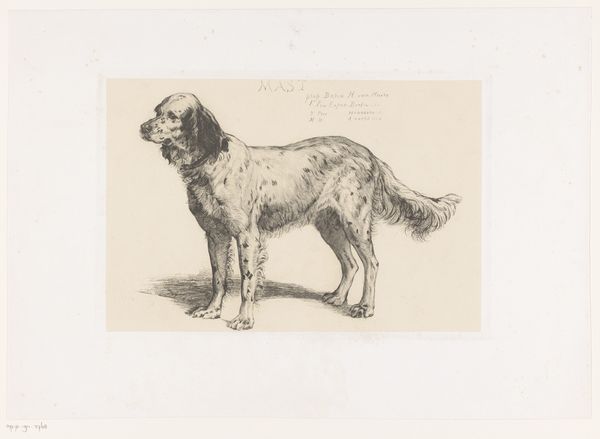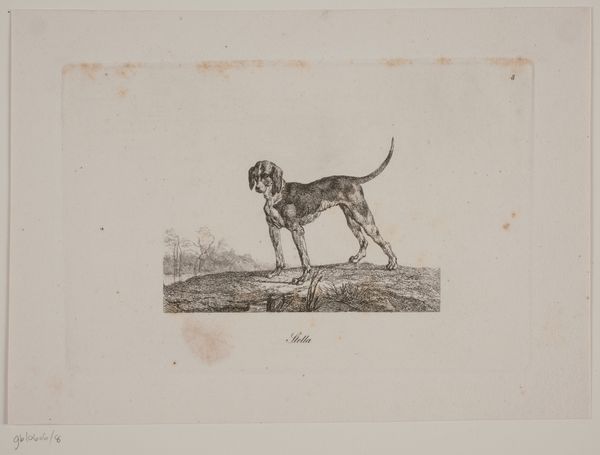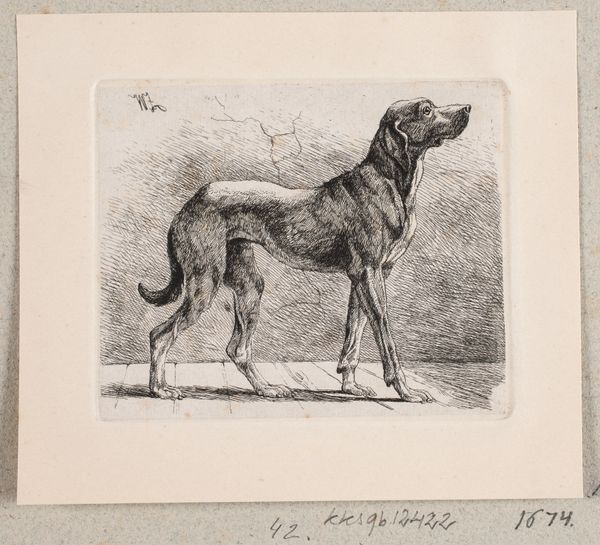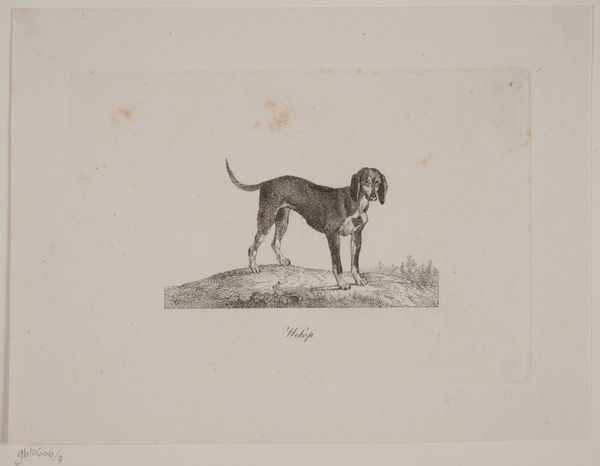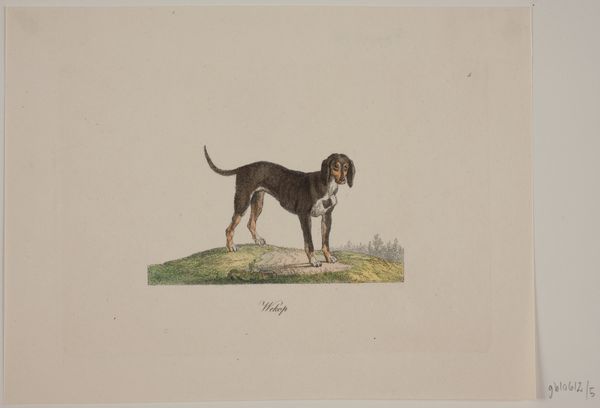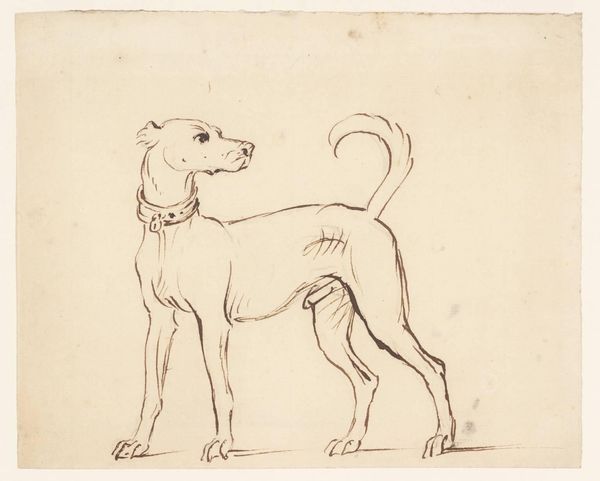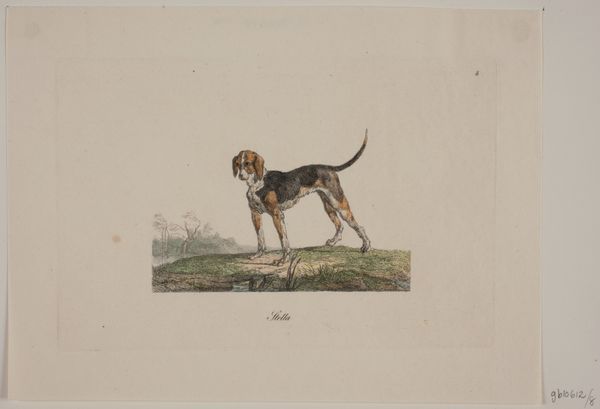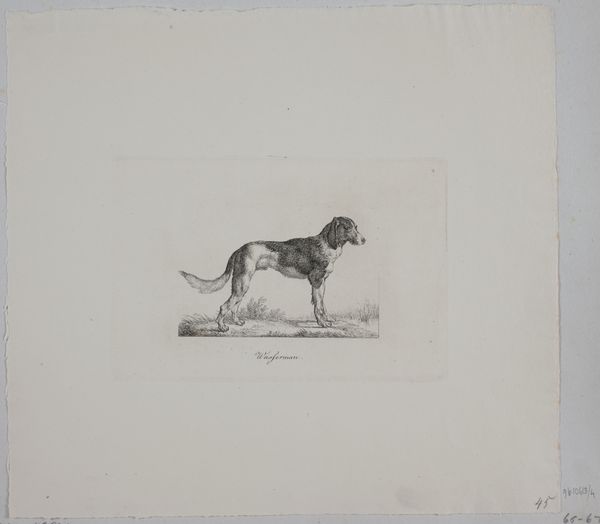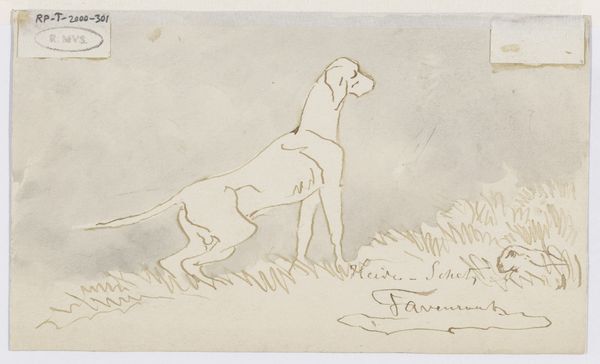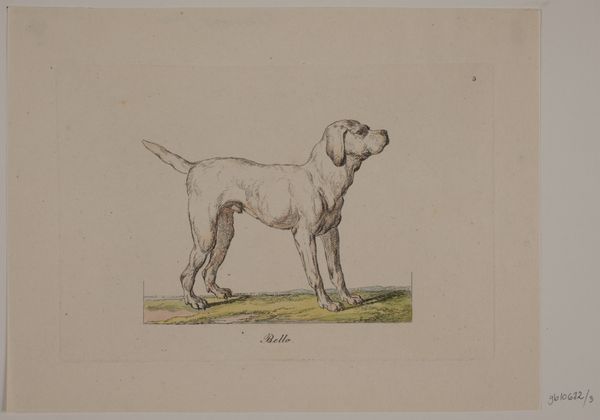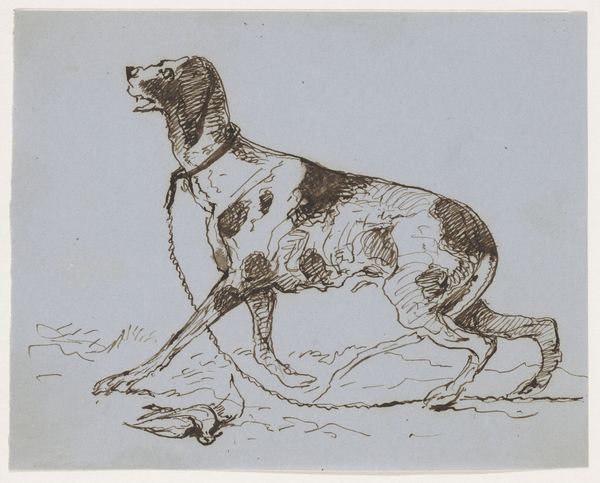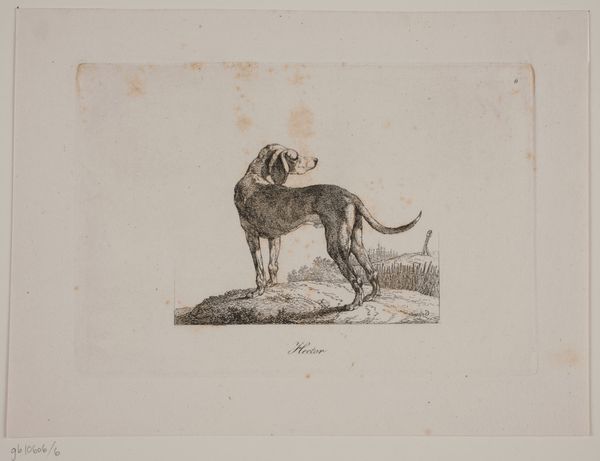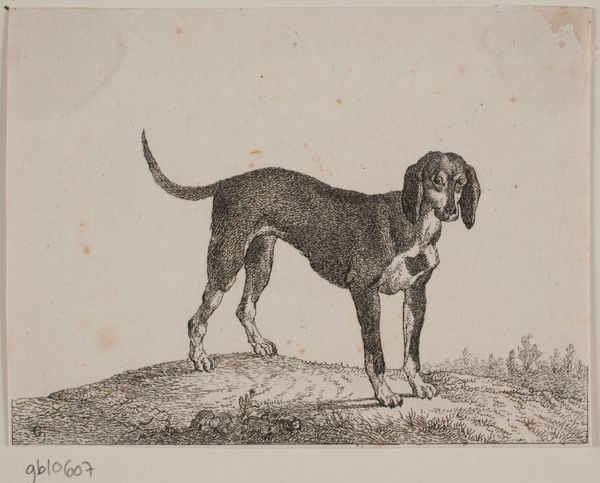
drawing, ink
#
drawing
#
imaginative character sketch
#
light pencil work
#
childish illustration
#
light coloured
#
dog
#
old engraving style
#
landscape
#
figuration
#
personal sketchbook
#
ink
#
geometric
#
ink colored
#
line
#
sketchbook drawing
#
cartoon style
#
cartoon carciture
Dimensions: height 88 mm, width 99 mm
Copyright: Rijks Museum: Open Domain
Curator: "Hond," or "Dog," as it translates, a simple ink and pencil drawing possibly made anytime between 1892 and 1940, by the artist Henri Verstijnen. What strikes you initially about this image? Editor: The stark contrast. It's deceptively simple, almost minimalist in its execution. It presents such a clear delineation of figure and ground. The line work appears economical and deliberate. Curator: Precisely. And considering the artist’s wider body of work, predominantly lithographs, you wonder why they are working with such immediate, almost provisional means? Was sourcing material, due to economic and/or other access obstacles, easier during wartime, to just reach for humble pencil and ink? Editor: That reading situates Verstijnen’s approach to art making in a socioeconomic sphere that certainly reflects some historical pressures around accessibility. Moreover, the stark visual vocabulary creates a powerful contrast between domestication and the wild, a contrast maybe inspired by social stratification or something else he felt deeply? The loneliness, even the slight anatomical distortions, hints at the lived realities of stray animals – their vulnerabilities under capitalism? Curator: Intriguing. But beyond its possible sociopolitical messaging, let’s think about process. See the line quality—scratchy in places, smooth in others. Consider the weight and directionality, all suggesting it's an agile application, but a well thought through use of materials. And while it resembles mass printed works, there is still a level of singularity inherent within such an act of art making... Editor: Yes, one can’t fully disregard the impact that this stark figuration of the dog would’ve made to its contemporary audiences in 1940's Europe. Pets symbolize a bourgeois stability which was violently contrasted through war and violence at the time. Therefore the symbolism of this image lies somewhere between stability and destitution, which many families sadly knew first hand. Curator: That adds to my reading, certainly – thinking about the production *and* reception of such drawings, considering everything around its creation from production, to labour and accessibility. I can now see your reading more clearly. Editor: It's a stark and haunting work, no matter how you interpret it. Curator: Agreed. It makes you ponder beyond its deceiving, simplified outlook!
Comments
No comments
Be the first to comment and join the conversation on the ultimate creative platform.
